Torrevieja has quickly grown from a salt-mining and fishing village to a cosmopolitan beach town with a population of about 100,000 which swells even more in the summer months.
Its great location on the south Costa Blanca between the sea and two salt lakes has turned Torrevieja into a top spot for holidaymakers and expats from across Europe and South America.
With more than 130 nationalities living in Torrevieja, it has a colourful culture which is reflected in its festivals and fiestas. Some pay homage to the town’s history and traditions while others embrace the new Torrevieja.
At the beginning of the year, like many towns in Spain, Torrevieja celebrates the arrival of the Three Kings at Christmas with a huge parade and streets lined with excited children. It also puts on a colourful carnival to mark the beginning of Lent with beautifully-decorated floats and fancy dress.
Although many events have religious connections, they are by no means sombre affairs. As well as celebrating Jesus, the Virgin and saints’ days, the fiestas are also major tourist attractions and so music, dancing, food and fireworks often accompany the more solemn elements.
But the town also hosts festivals which are very special to its townsfolk.
Easter in Torrevieja

Easter is a very emotional time in Spain with beautiful, larger-than-life sculptures showing the Last Supper or Christ’s Crucifixion being paraded through the streets.
Brotherhoods of men and women wear robes covering them from head to toe with pointed hats leaving just slits for their eyes.
The costumes date back to the medieval period when penitents could show their remorse while remaining anonymous.
Some processions through the streets are held at night in complete silence, which creates even more tension to the fascinating sight of masked groups parading their impressive works of religious art.
Easter Saturday’s parade is a noisy affair as everyone is invited to bring their drum to bang on while walking the route.
Torrevieja’s processions are held from Palm Sunday through to Easter Monday with much of the activity centred on the Immaculada Concepcion church and Plaza de la Constitucion.
There are 14 brotherhoods or groups in Torrevieja to exhibit their artistic heritage of thrones, statues and costumes.
Holy Week in the town reflects its cosmopolitan nature with brothers and bearers of different nationalities.
A taste of Andalusia in Torrevieja
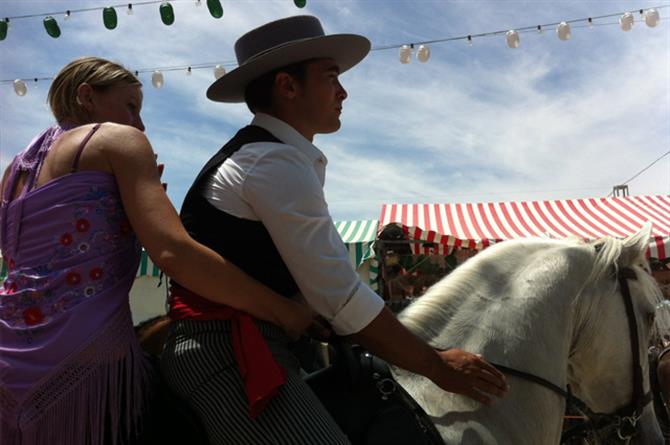
The May Fairs in Sevilla and other Andalucian towns are legendary. Thankfully, people in Torrevieja do not have to travel far to join in the fun.
Torrevieja May Fair started as a small party among friends from Sevilla. Now, it is a major event with flamenco dancing, fabulous horse shows, singing and plenty of food, of course.
The show is held over five days at the beginning of May in the port area with hundreds of girls swishing around in their colourful flamenco dresses.
Burning bonfires in summer
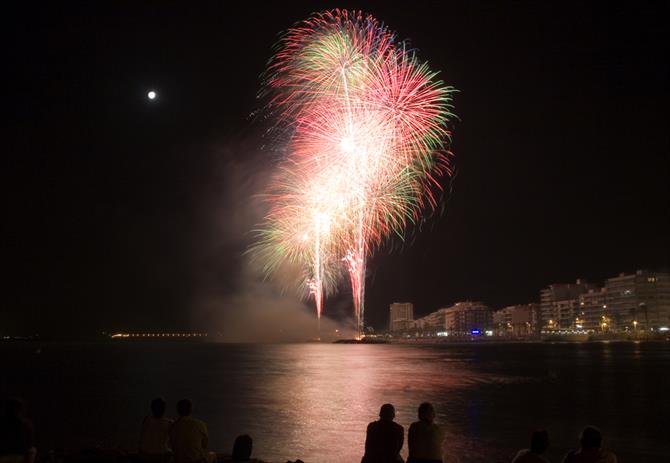
Midsummer and the longest day is another excuse to party on the Costa Blanca. In Torrevieja, a giant beach party attracts thousands of revellers to celebrate San Juan on June 23.
Many people will bag their space on the sand early. Huge bonfires are lit while people wait for midnight with music, food and drink.
It’s a magical night with people dancing by firelight to wait for the midnight hour when they jump over the bonfire or wade into the sea to bring good fortune for the following 12 months.
While different districts hold their own celebration, the best place to enjoy San Juan in Torrevieja is on the Playa del Cura beach or in the bars along the Paseo Maritimo promenade where you can see a spectacular fireworks display.
Sailors and sea shanties in Torrevieja
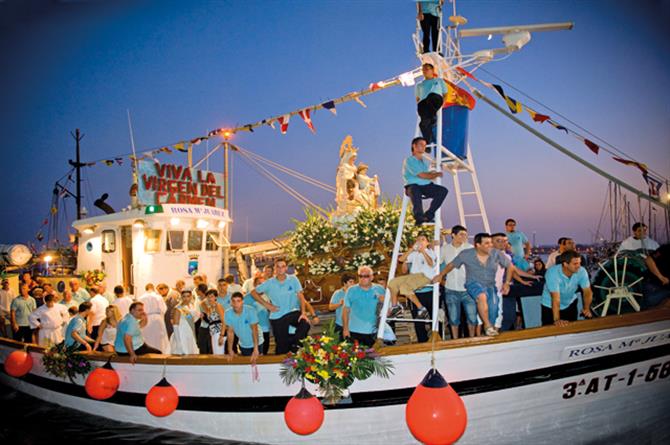
As the holidaymakers head for the beaches in July, it seems fitting that Torrevieja pays tribute to the sea this month with two special festivals.
First up is the Virgen del Carmen fiesta, who is the patron saint of fishermen.
Each year, on or around July 16, the fishermen’s association throws a massive party in honour of their patron saint.
First, there’s a parade from the Plaza de la Constitucion to the Paseo Vista Alegre and the port with music followed by the bizarre tradition of cucaña where competitors have to climb a greasy pole.
Apparently the game originated in Naples in the 16th century and was readily snapped up in Latin American countries as a fun event.
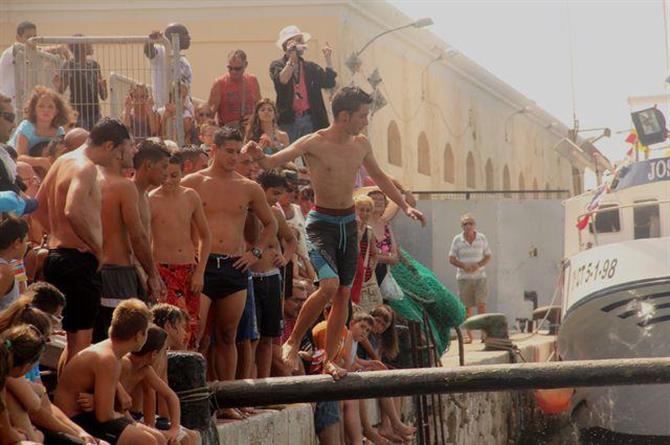
Late afternoon, the sailors conduct a beautiful procession accompanied by the Virgen del Carmen before she is put on a boat to be taken out to sea.
It ends with huge fireworks display to end a fun day remembering Torrevieja’s proud fishing history.
This is followed by one of the most important dates in the cultural calendar, the musical International Habaneras and Polyphony Contest.
The competition can attract more than 800 choristers from across the world to keep the tradition of the habaneras alive. The habaneras originated in Cuba in the 19th century with songs of a precise rhythm.
When Torrevieja sailors headed for Cuba 150 years ago, they picked up this musical genre and bought it back home with them. The competition grew from this in the 1950s.
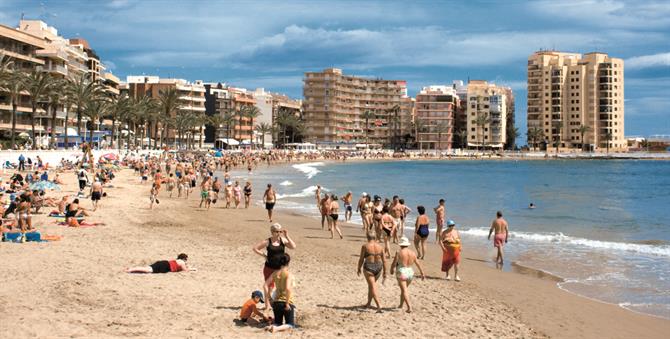
The most popular activity is the night of habaneras is held on Playa del Cura when the traditional spirit of the music is recaptured.
Revellers sit on the sand, eating fresh watermelon and listing to these rhythmic songs by the seaside.
Parade of Giants and Big Heads in Torrevieja

At the end of the year before Christmas takes over, Torrevieja has a wonderful festival to celebrate its patroness, the Immaculate Conception.
This is many people’s favourite fiesta and is a lovely way to round off the year.
Every day there are wacky parades of giants and big heads from the Plaza de la Constitucion through neighbouring streets.
Flowers are offered to the Immaculate Conception on Constitution Day, December 6, followed by the setting up of the nativity scene or crib.
The following day’s events include a giant paella competition and mascletas (noisy firecrackers) in the Recinto Portuario (fairground) followed by a children’s parade and disco.
On the Day of the Immaculate Conception, December 8, there is a solemn procession with the statue of the patroness along the main streets followed by a massive fireworks display to round off the festival with a bang.
